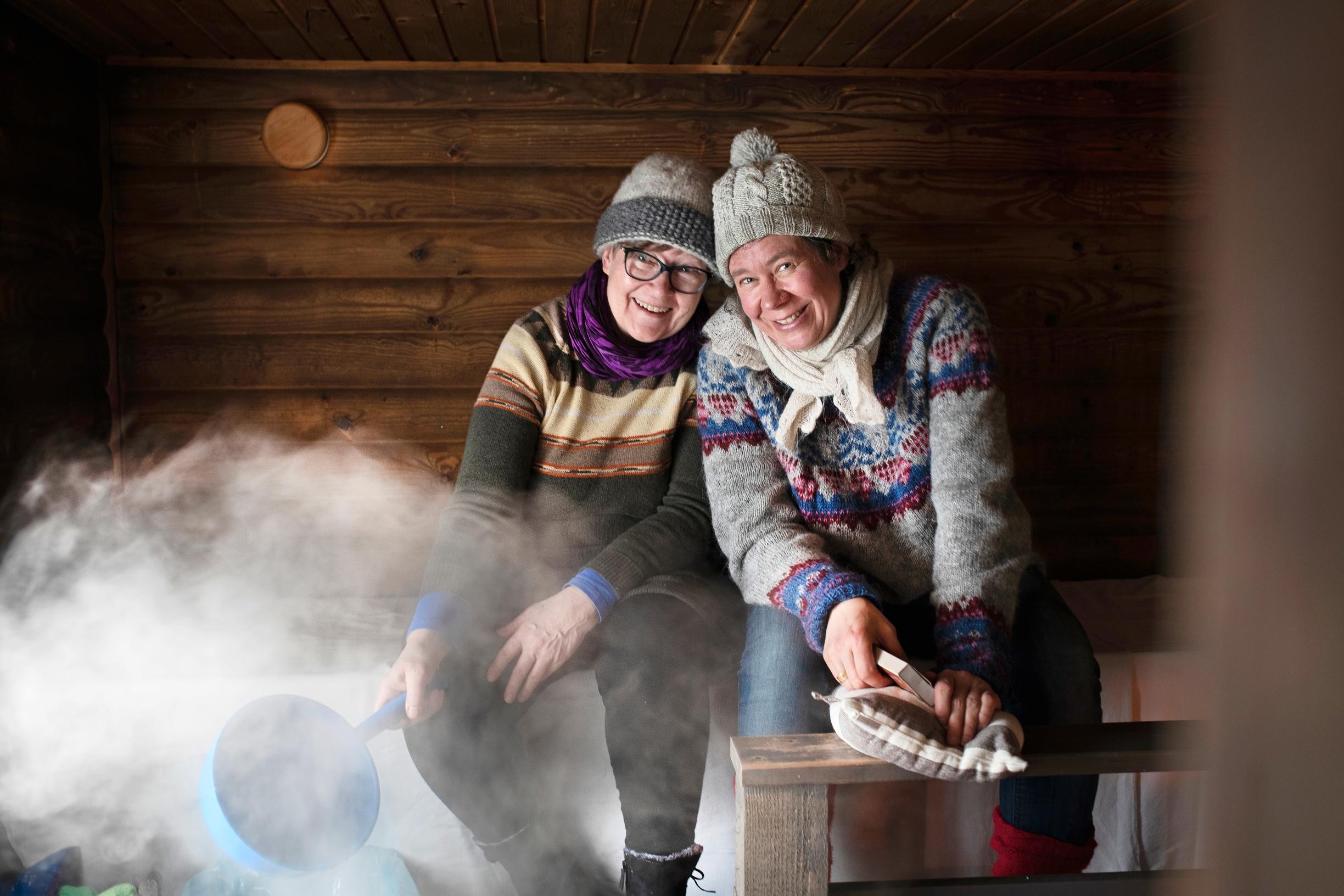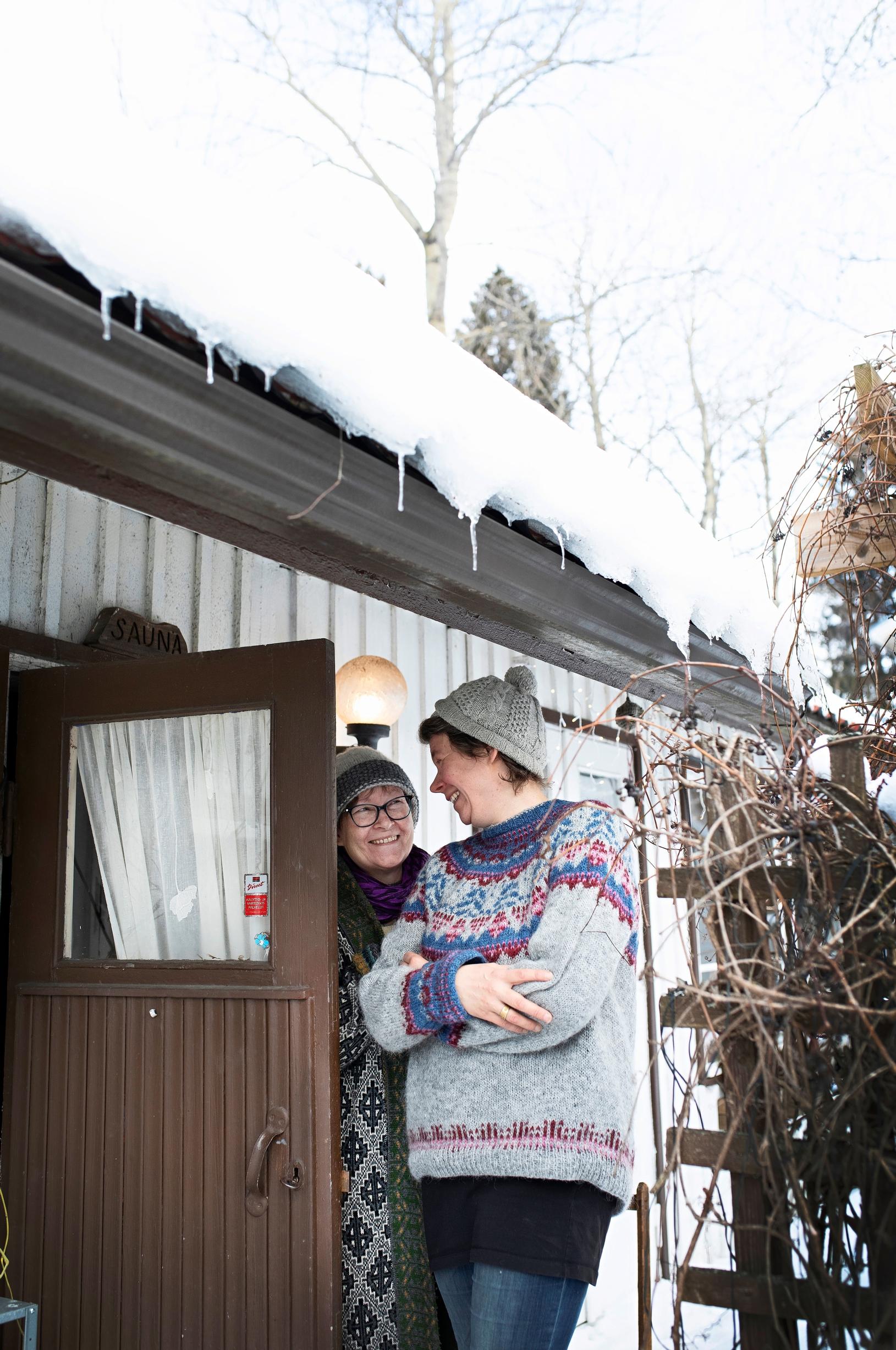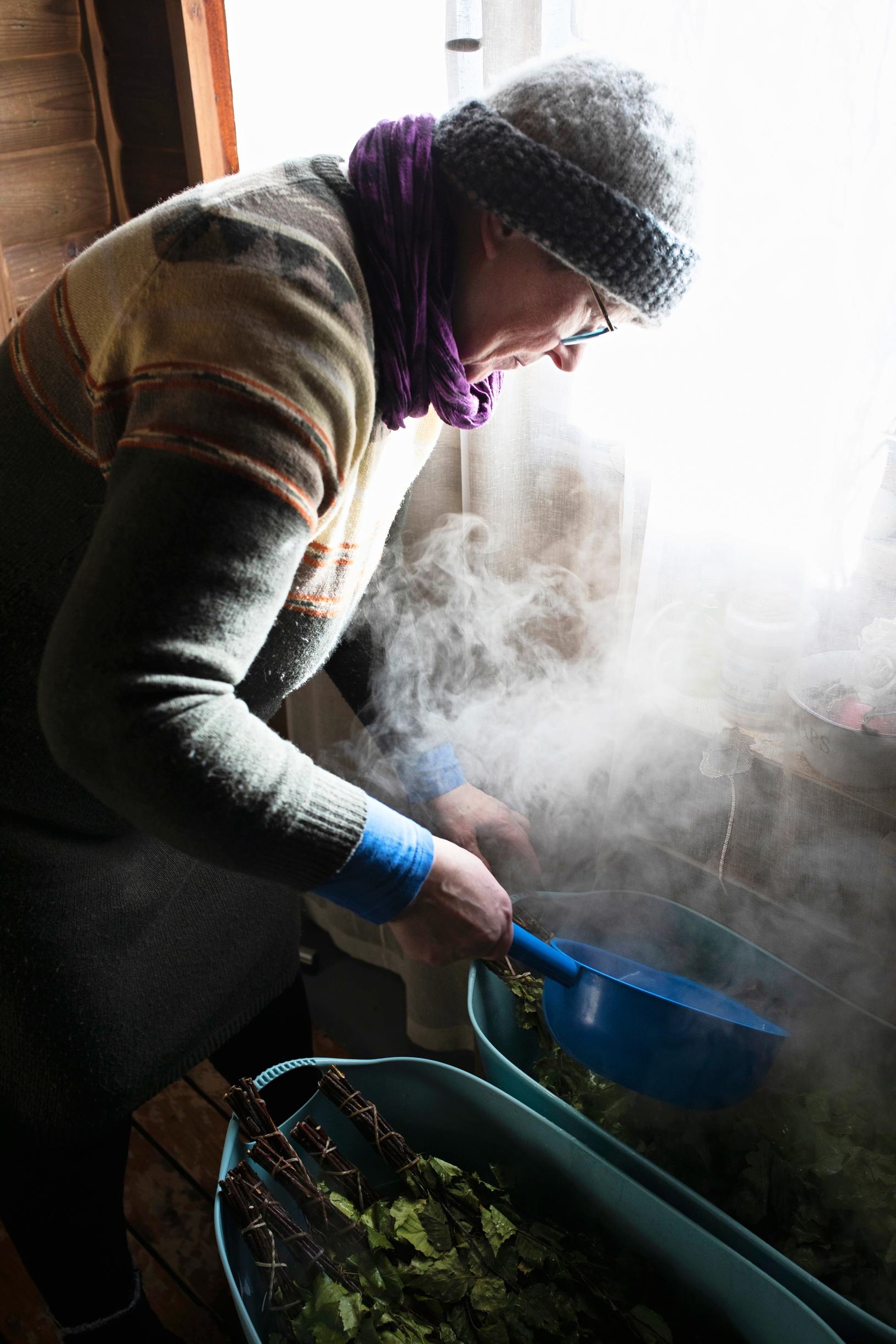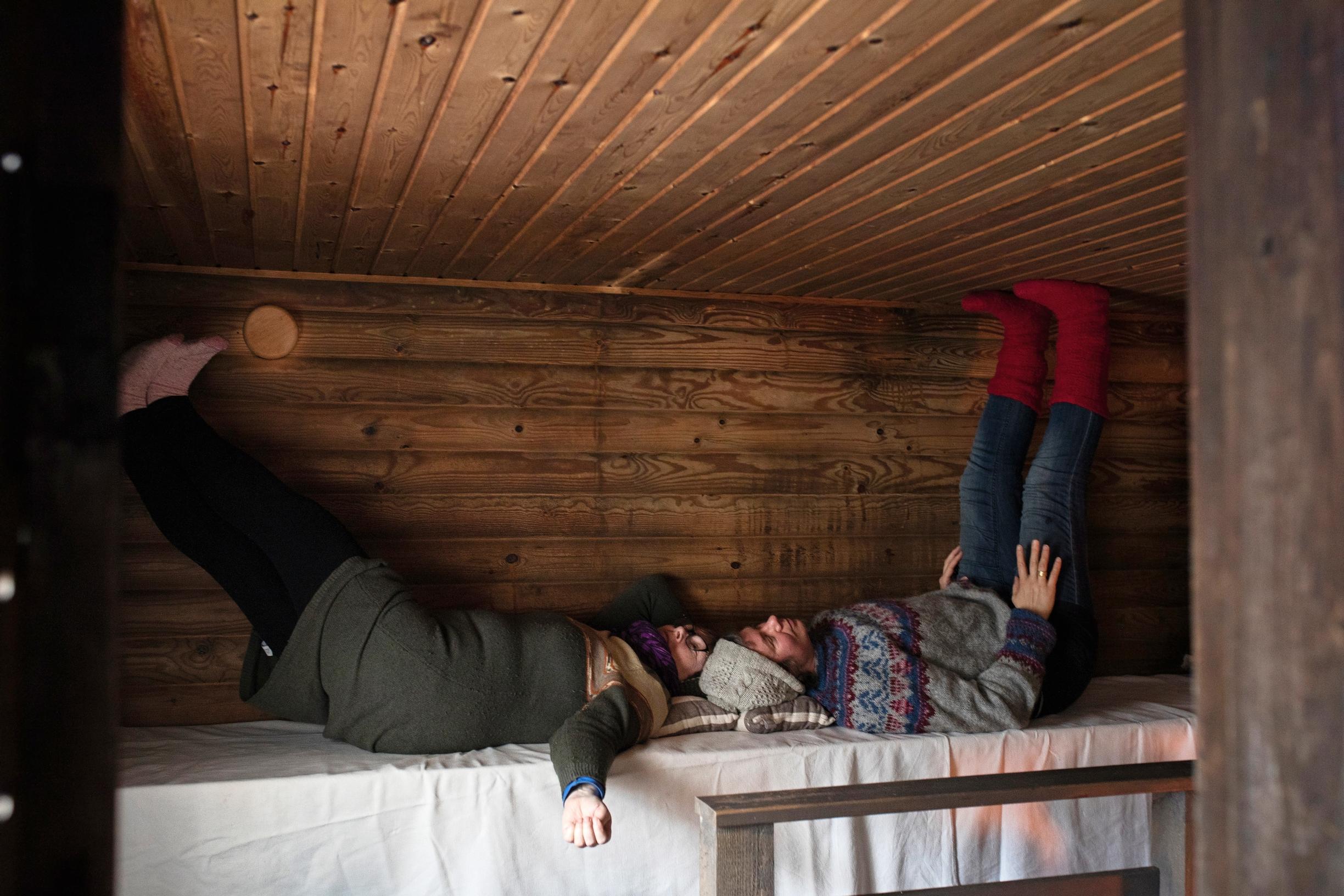
Modern sauna grannies revive healing traditions: “A woman gets the care she needs in the sauna”
Bridal sauna, closure ceremony sauna, seasonal sauna—Kirsti Vikki and Salla Pyykkönen delved into old Finnish sauna traditions and realized the healing aspect had been forgotten. This revelation led them on a new career path.
In 2015, doulas Salla Pyykkönen and Kirsti Vikki attended a birth conference that would change their relationship with the sauna.
On the stage, Julia Shelepina, Russian midwife, psychologist, and anthropologist, spoke about how women receive little attention after giving birth and what kind of role the sauna has as a place of spiritual care.
Intrigued, Salla and Kirsti wanted to learn more. After the talk, they approached Julia.
“Please contact me through the conference organizer,” she replied dryly and walked away.
Disheartened, the women returned to the audience. Soon, however, Julia slipped onto the bench behind Salla and whispered, “You look just like my sister.”
And so Julia became a teacher to Kirsti and Salla, who now call themselves Sauna Grannies.

Connected by their shared background
Kirsti and Salla's friendship stems from the East, the same source as the cultural history of the sauna.
Kirsti, who had graduated as a field biologist, built a career in the pharmaceutical industry, managing the Russian and Baltic markets for her employers. Salla, in turn, is a trained Russian language translator and interpreter who worked as an event producer through her own company, as well.
After having children, Salla became interested in the world of childbirth and studied to become a doula. When Kirsti entered retirement after a long career, Salla invited her to join voluntary doula activities. In the summer of 2015, the women attended the conference in St. Petersburg.
The sauna had always been important to both of them. When Kirsti lived across the eastern border of Finland, she deeply missed the sauna. Later, she moved to a house in Helsinki, Finland, and calls its wood-heated sauna the best thing in the world.
“I would be willing to move elsewhere, but having my own sauna is an integral part of my daily life.”
Salla says she has always enjoyed the safe atmosphere of the sauna. Even her earliest childhood memory takes place there, still bringing her back to that comforting darkness.
However, Julia reminded them of the crucial role of the sauna in caring for new mothers. They wanted to share this with others, too.

Reviving old rituals
Sauna training began soon after the conference. In her presentation, Julia had talked about the closure ceremony, which involves caring for a mother after childbirth to help close the birth experience. Closure ceremonies are known worldwide in various forms. In Finland, the ritual has traditionally taken place in the sauna.
“In a closure ceremony, one can leave behind not only childbirth but any significant life experience, which doesn’t have to be unpleasant or traumatic. Closing experiences like retirement or divorce can help you move forward,” Salla says.
Julia taught the steps of the closure ceremony to Salla and Kirsti hands-on: what to do, why, and in what order. She came to Helsinki a few times, and they also held training sessions online.
Salla and Kirsti didn't just want to bring Slavic traditions to Finland but to reinstate the characteristics of Finnish sauna rituals.
They spent days in the archives of Kansanrunousseura (“Finnish Folklore Society”), searching for information on sauna ceremonies and rituals related to childbirth and postpartum periods in Finland. Based on archival sources and Julia's teaching, they built a model of what the Finnish closure sauna could be today.

According to the sauna grannies' interpretation, the closure ceremony begins with a conversation. If the bather is a woman who has given birth, they might discuss her birth story. In the sauna, Kirsti and Salla then bathe her with birch whisks using various techniques: sometimes pressing the whisk against the skin, other times twirling it to bring in warm air. All the while, they sing Finnish folk songs and lullabies.
Then they massage, exfoliate, and wash the bather. Finally, they swaddle her in closure cloths, after which she can rest. At the end of the ceremony, everyone has seasonal meal together.
The closure sauna lasts about six hours, depending on the person.
"We warm up and care for the bather so they can release something that needs to be let go. After that, they can be closed up whole again. Sometimes this takes less time, sometimes more," Salla says.
Alongside the labor-intensive closure sauna, they later developed a shorter seasonal sauna. They also offer bridal saunas. The treatment includes an herbal foot bath, whisking, amber exfoliation, washing, and some food and drink.
So far, Salla and Kirsti have bathed dozens of guests. Most of them are women who have given birth, but others have also come seeking to shed burdens accumulated along their life's path.
“Many feel that on the sauna benches, they can momentarily be a small child who is cared for,” Salla says.

Lessons in humanity
Sauna treatments can be very meaningful for those being bathed. Giving them has also left its mark on Kirsti and Salla.
One key lesson has been how to connect with people and assess the care they need. When should herbs be used, when honey or clay? Julia has also coached them in recognizing when to decline giving a treatment. For example, the closure ceremony is not suitable for processing acute trauma.
Providing treatments requires sensitivity and the ability to connect with people, Salla says.
“Through sauna bathing, and perhaps also through self-awareness and age, I’ve learned to listen to people better. Bathing others is very intensive, just like working as a doula, and you have to be fully present for the other person,” she says.
“I can also meet people in a different way now. You never know what you’ll encounter when bathing others. Nowadays, I appreciate even more that I can strip away my own preconceptions,” Kirsti says.
Exploring the cultural history of the Finnish sauna has also deepened their relationship with it. “People talk about the sanctity of the Finnish sauna, but do they remember that it truly was a place where the deceased were washed, babies were born, and new mothers were cared for?” Kirsti asks.
An element of care that has been part of the Finnish sauna tradition has since been forgotten.
“In the past, families bathed together and washed each other’s backs. Nowadays, Finns tend to take a sauna like they were alone. You whisk your own back. The sauna and steam are as hot as possible. But the sauna isn’t just about entering a dry, hot room and running into the lake after.”
Salla says that even today, the sauna offers something deeply spiritual to the bather, as it forces the person to stop and be present.
Because of this, the care of women is something Kirsti and Salla want to remind others about.
“A mother and woman is often the one who takes care of others, but who takes care of her? I wish people accepted that everyone is allowed to long for care,” Salla says.


